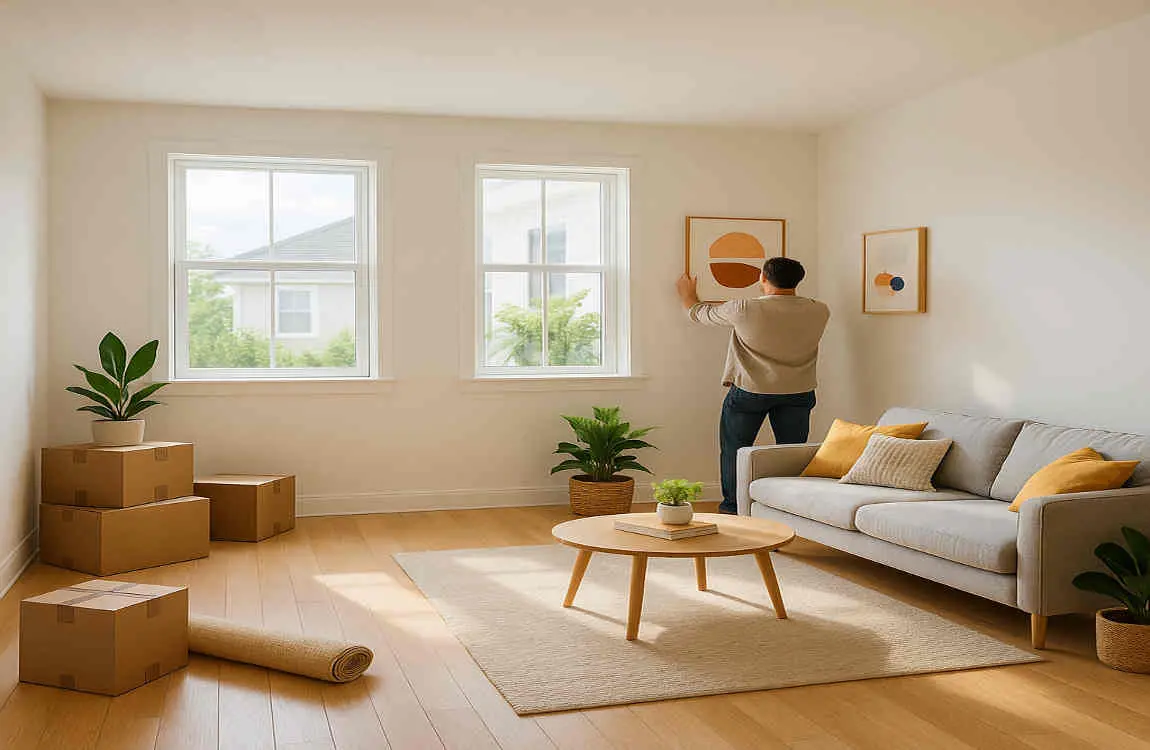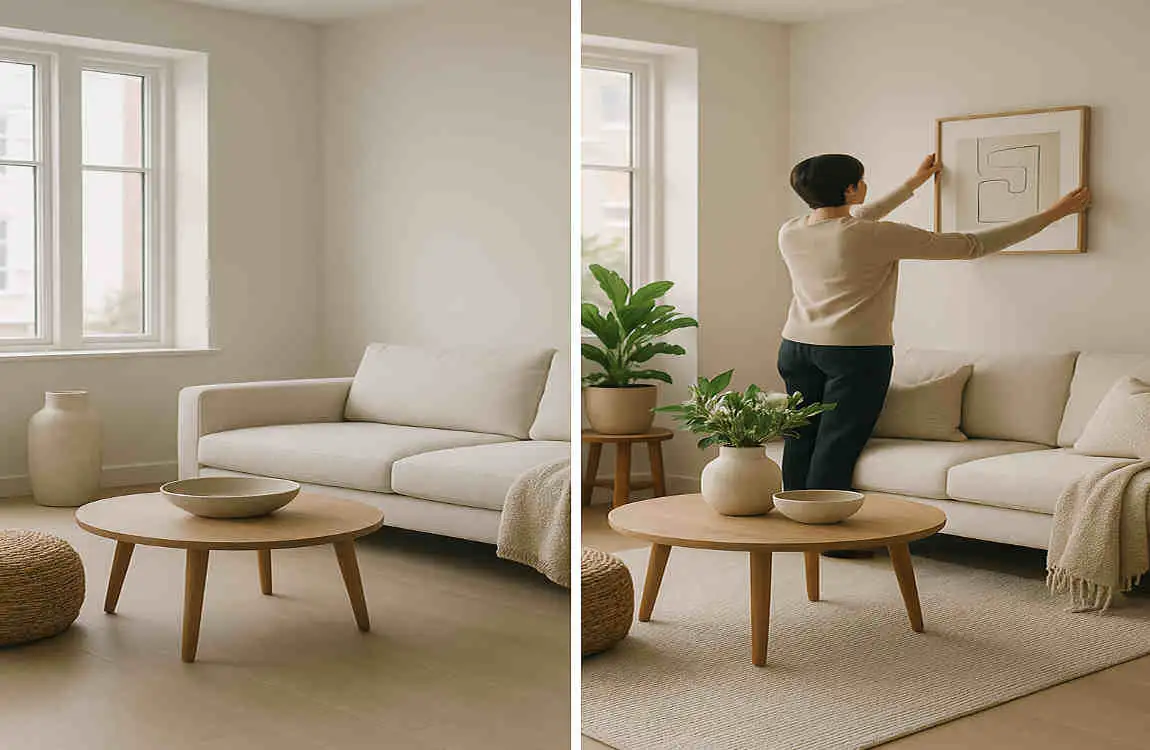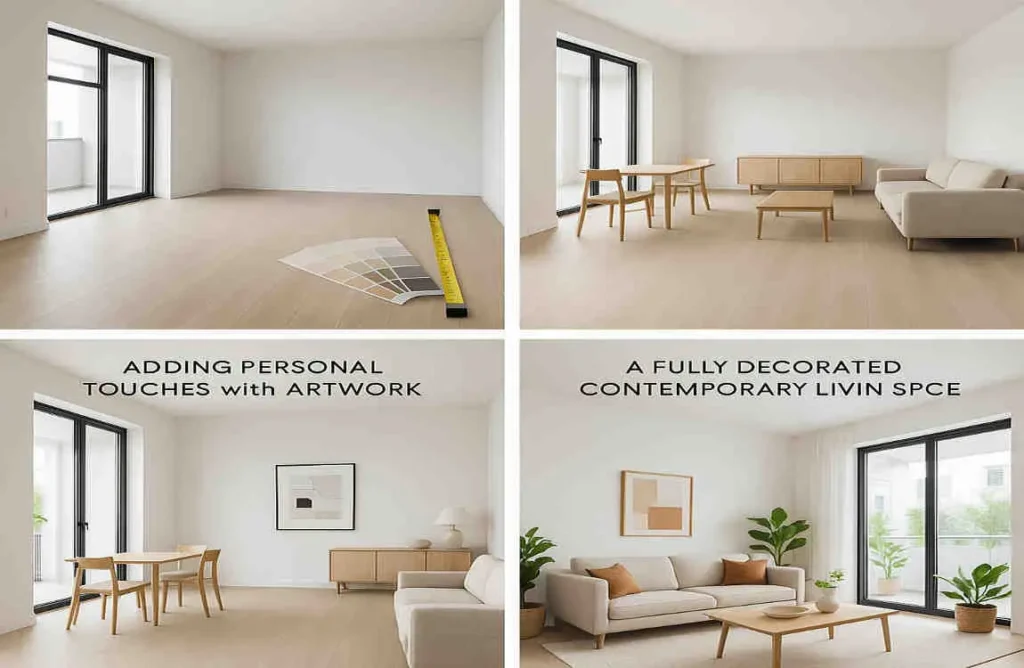Moving into a new build house is an exciting experience filled with endless possibilities for making the space truly your own. However, decorating a brand-new home comes with its own set of challenges and considerations that differ from those of older properties. One common question that arises is, “Can you decorate a new build house straight away?”
Understanding New Build Houses

New build houses are properties that have been recently constructed and have not been previously occupied. These homes often feature modern layouts, energy-efficient systems, and contemporary finishes. When it comes to decorating, new builds present a blank canvas, allowing you to put your personal stamp on every room from day one.
However, the construction process and timeline of a new build can affect when you can start decorating. Factors such as the completion of construction, drying times for plaster and paint, and the curing of materials like concrete can impact your decorating schedule.
Can You Decorate a New Build House Straight Away?
The answer to this question depends on several factors, including the stage of construction, the materials used, and the specific decorating tasks you have in mind. In most cases, it’s advisable to wait a short period before diving into full-scale decorating.
Factors That Influence Decorating Immediately
- Construction completion: Ensure that all construction work is finished and the house has been thoroughly cleaned before starting any decorating.
- Drying times: Freshly plastered walls and newly laid concrete floors need adequate time to dry and cure before you can paint or install flooring.
- Safety: Ensure that all necessary inspections have been carried out and that the house is safe to occupy before beginning decorative work.
Potential Risks of Decorating Too Soon
- Moisture: If you paint or wallpaper walls before they have thoroughly dried, you risk trapping moisture, which can lead to bubbling, peeling, or mould growth.
- Settling: New homes may experience some settling in the first few months, which can cause small cracks or shifts in walls and ceilings. It’s best to wait for any settling to occur before making permanent decorative changes.
- Paint curing: Freshly painted surfaces need time to cure fully before you can safely hang artwork or install fixtures without damaging the paint.
Practical Advice
While you may be eager to start decorating immediately, it’s essential to prioritise tasks that can be done safely and without risk of damage. Here are some expert recommendations:
- Focus on decorative planning, such as creating mood boards, selecting colour schemes, and browsing furniture options, while you wait for the house to be ready for hands-on decorating.
- Begin with non-permanent decorative elements, such as curtains, rugs, and freestanding furniture, which can be easily adjusted if needed.
- Wait for walls to dry completely before hanging wallpaper, painting, or installing shelving.
- Allow floors to cure fully before laying carpets or installing heavy furniture.
Preparing Your New Build House for Decoration
Before you start house decorating, it’s crucial to ensure that your new build is ready. Here’s a pre-decoration checklist to help you prepare:
Pre-Decoration Checklist
- Inspections: Arrange for any necessary inspections, such as a final building inspection or a home warranty inspection, to identify any issues that need addressing before decorating.
- Repairs: Rectify any snags or defects identified during inspections, such as cracks, leaks, or faulty fixtures.
- Cleaning: Give the entire house a thorough clean, including windows, floors, and surfaces, to create a fresh starting point for decorating.
- Moisture and temperature checks: Use a moisture meter to ensure that walls and floors are sufficiently dry before painting or installing flooring. Maintain a stable temperature and humidity level to aid the drying process.
Selecting the Right Materials and Finishes
When choosing materials and finishes for your new build, consider the following:
- Opt for breathable, moisture-resistant paints and wallpapers to allow walls to continue drying gradually.
- Select low-VOC (volatile organic compound) paints and finishes to minimise off-gassing and maintain good indoor air quality.
- Choose flooring materials that are suitable for the subfloor and compatible with underfloor heating systems, if applicable.
Planning Utilities and Electrical Outlets
Consider your decorating plans when positioning electrical outlets, light fixtures, and other utilities:
- Ensure that outlets are conveniently located for your intended furniture layout and decor.
- Plan for sufficient lighting, including overhead lights, task lighting, and accent lighting, to create a well-lit and inviting space.
- Consider incorporating smart home technology, such as automated lighting or voice-controlled devices, for added convenience and modern functionality.
Setting a Budget and Timeline
Decorating a new build can be a significant investment, so it’s essential to set a realistic budget and timeline:
- Prioritise your decorating wishlist and allocate funds accordingly.
- Plan for larger purchases, such as furniture and flooring, as well as smaller decor items and accessories.
- Create a timeline that allows for necessary drying and curing times, as well as the lead times for ordering and delivering modern furniture and materials.
Essential Decoration Tips for New Build Homes

When decorating your new build, keep the following tips in mind to create a stylish, functional, and inviting space:
Choosing Colours and Themes
- Opt for light, neutral colours to create a sense of space and airiness, especially in smaller rooms or those with limited natural light.
- Consider a cohesive colour scheme throughout the house to create a sense of flow and unity.
- Incorporate accent colours or bold patterns in easily changeable elements, such as cushions, curtains, or artwork, to add personality and visual interest.
Decorating Empty Spaces
- Start with the larger pieces, such as sofas, beds, and dining tables, to anchor each room and establish a focal point.
- Layer in smaller furniture items, such as side tables, bookcases, and storage units, to provide functionality and visual interest.
- Use rugs, curtains, and wall art to add texture, colour, and pattern to the space.
Furniture Choices
- Select furniture that suits the scale and layout of each room, ensuring that there is sufficient circulation space and that the room feels balanced.
- Opt for versatile, multi-functional pieces that can adapt to your changing needs, such as modular sofas or expandable dining tables.
- Consider the durability and ease of maintenance of furniture materials, especially in high-traffic areas or homes with children and pets.
Wall Treatments and Flooring
- Choose wall treatments that complement the style and function of each room, such as washable paint finishes in kitchens and bathrooms or textured wallpaper in living areas.
- Consider the practicality and durability of flooring options, such as hardwood, laminate, or tile, based on the room’s purpose and your lifestyle.
- Add warmth and comfort with soft furnishings, such as cushions, throws, and area rugs.
Lighting
- Incorporate a mix of lighting types, including overhead lights, task lighting, and accent lighting, to create a layered and inviting ambience.
- Take advantage of natural light by positioning furniture near windows and using light, sheer window treatments.
- Use dimmer switches or innovative lighting systems to easily adjust the mood and brightness of each room.
Incorporating Smart Home Technology
- Consider integrating smart home devices, such as thermostats, lighting controls, and security systems, for added convenience and energy efficiency.
- Plan for the placement of smart speakers, hubs, and other devices to ensure seamless integration with your decor.
- Opt for sleek, minimalist designs that complement your chosen aesthetic.
Common Mistakes to Avoid When Decorating a New Build
To ensure a successful and long-lasting interior decorating result, avoid these common pitfalls:
Overdecorating Before the House Settles
- Resist the temptation to fill every space immediately, as the house may experience some settling and shifting in the first few months.
- Allow time for any cracks or movement to appear and be rectified before investing in permanent fixtures or custom-fitted furniture.
Ignoring Builder Recommendations or Warranties
- Follow any guidelines or recommendations provided by your builder regarding decorating timeframes and materials to avoid invalidating warranties or causing unintended damage.
- Consult with your builder or a professional decorator if you have any doubts or concerns about your decorating plans.
Installing Heavy or Permanent Fixtures Too Early
- Wait until the house has fully settled and any necessary repairs have been made before installing heavy wall-mounted items, such as large mirrors or shelving units.
- Avoid making permanent changes, such as built-in cabinetry or custom-fitted carpets, until you have lived in the space for a while and are confident in your design choices.
Skipping Moisture and Ventilation Considerations
- Ensure that rooms are well-ventilated and maintain a consistent temperature to aid the drying process and prevent moisture buildup.
- Use a dehumidifier in damp areas, such as bathrooms or kitchens, to reduce the risk of mould growth or damage to decor.
Poor Timing of Furniture Delivery or Installation
- Coordinate the delivery and installation of large furniture items, such as sofas or bedroom sets, to avoid damage to freshly painted walls or newly laid flooring.
- Allow sufficient time for paint and flooring to cure fully before installing heavy items or subjecting them to regular use.
Additional Tips: Decorating with Children or Pets in a New Build
If you have children or pets, consider these additional tips when decorating your new build:
Safe Decoration Choices
- Opt for non-toxic, low-VOC paints and finishes to minimise exposure to harmful chemicals.
- Avoid sharp corners or breakable decor items that could pose a safety risk to young children or curious pets.
- Secure tall furniture items, such as bookcases or dressers, to the wall to prevent tipping accidents.
Durable Materials and Finishes
- Choose hardwearing, stain-resistant fabrics for upholstery and curtains to withstand spills and frequent cleaning.
- Opt for scratch-resistant flooring options, such as tile or laminate, in high-traffic areas or homes with active pets.
- Consider washable paint finishes or scrubbable wallpapers for easy cleaning of walls and surfaces.
Maintaining an Appealing, Functional Environment
- Incorporate ample storage solutions to keep toys, pet supplies, and other items organised and out of sight.
- Create designated play areas or pet zones to minimise wear and tear on decor in other parts of the house.
- Select furniture and decor items that can adapt to your family’s changing needs, such as convertible cribs or modular seating.
